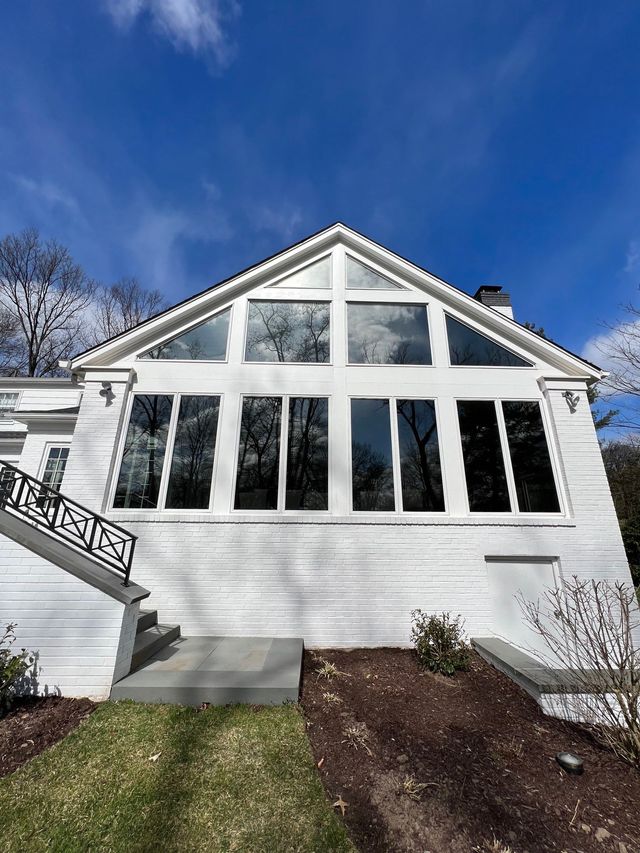Upgrade Your Home with Professional Residential Window Tint Providers
Upgrade Your Home with Professional Residential Window Tint Providers
Blog Article
Exactly How Residential Home Window Tinting Enhances Your Home's Power Efficiency
Residential home window tinting provides a compelling option for property owners looking for to boost power performance within their living spaces. By applying specialized films to home windows, it efficiently minimizes warmth transfer, therefore supporting interior temperature levels and lessening the need for excessive home heating or cooling.
Understanding Home Window Tinting
Comprehending window tinting is important for home owners looking for to improve both comfort and power performance in their space. Residential Window Tint. Window tinting entails the application of a slim film to the interior or exterior surface area of glass windows. This movie can significantly regulate the amount of sunshine and warmth that enters a home, hence influencing indoor environment problems
There are numerous types of window tinting movies offered, each with unique residential or commercial properties. For example, dyed movies soak up solar power, while reflective movies deflect it away from the glass surface area. Ceramic movies provide a balance of visibility and heat denial, making them a prominent selection among homeowners. The performance of home window tinting is often determined by its Visible Light Transmission (VLT) percentage, which shows how much light can go through the film.
Advantages of Energy Effectiveness
Window tinting not only improves appearances however likewise plays a considerable function in improving power efficiency within household rooms. By reducing heat transfer with windows, tinted films develop a more stable indoor environment, which can bring about significant decreases in energy usage for home heating and cooling. This power performance equates right into lower energy costs, providing property owners with considerable long-term cost savings.

Furthermore, home window tinting improves the comfort of living spaces. By reducing glare and obstructing harmful UV rays, colored home windows produce a more pleasurable environment, which can result in improved wellness for residents. The protection versus UV rays additionally aids maintain furniture and floor covering from fading, adding to the durability of house products.
Just How Tinting Functions
Tinting movies operate via a mix of innovative products and modern technologies developed to manage the quantity of solar power going into a home. Largely composed of polyester, these movies often include metal or ceramic bits that show and absorb warmth. This twin capability allows them to substantially minimize the penetration of ultraviolet (UV) rays and infrared radiation while permitting visible light to travel through.
The effectiveness of window tinting is determined by its solar warmth gain coefficient (SHGC), which shows how much solar power is transferred through the window. Reduced SHGC worths are more suitable as the original source they signify greater heat being look at here now rejected. In addition, home window colors can include a range of tones, allowing homeowners to personalize their aesthetic choices while enhancing power efficiency.
In addition, these movies act as an obstacle, protecting against heat loss throughout colder months by showing indoor warmth back right into the home. This thermal insulation effect enhances the air conditioning advantages obtained throughout warmer months, contributing to a balanced indoor environment year-round. By taking care of solar power effectively, residential home window tinting not just improves convenience yet additionally plays an important function in decreasing power intake and decreasing utility costs.
Picking the Right Tint

There are various types of window films available, including colored, metalized, and ceramic. Ceramic movies supply outstanding warm control without jeopardizing visibility and are extremely long lasting, making them a popular option.
Noticeable light transmission (VLT) is an additional essential variable, as it indicates the quantity of natural light that can travel through the tinted glass. Home owners need to choose a tint with a VLT that complements their lights preferences while still providing ample glare reduction.
Furthermore, evaluating the solar warmth gain coefficient (SHGC) can assist determine how well a color can obstruct warmth from sunlight. A reduced SHGC indicates better warm control, eventually enhancing energy performance.
Installation and Upkeep Tips
Correct setup and maintenance are vital elements in making best use of the advantages of residential home window tinting. Professionals additionally use specialized devices and techniques, which can enhance the sturdiness and performance of the color.
Complying with installment, maintenance is crucial to lengthen the life of the window movie. It is suggested to wait at least 30 days before cleansing the colored windows to allow the sticky to heal completely.
Attending to these concerns immediately can protect against further damage and preserve energy effectiveness. By sticking to these installment and upkeep suggestions, property owners can guarantee their home window tinting continues to give substantial power financial savings and comfort for years to come.
Conclusion
In verdict, residential home window tinting acts as an effective remedy for enhancing power efficiency within homes. By minimizing warmth transfer and obstructing damaging look at this website UV rays, home window movies contribute to decrease energy intake and boosted interior convenience. The option of appropriate tinting materials, along with proper setup and maintenance, additionally optimizes these benefits. Inevitably, home window tinting stands for a sustainable investment that not just decreases utility bills but likewise promotes a comfortable living environment throughout the year.
Window tinting includes the application of a slim film to the inside or exterior surface of glass windows. By lowering heat transfer with windows, tinted films produce a more secure indoor environment, which can lead to substantial decreases in power consumption for home heating and air conditioning.The performance of window tinting is measured by its solar warm gain coefficient (SHGC), which suggests how much solar energy is transferred with the home window. By taking care of solar energy effectively, household window tinting not only improves convenience but likewise plays a vital role in lowering power intake and lowering energy expenses.
By decreasing warm transfer and obstructing unsafe UV rays, window movies contribute to reduce energy intake and enhanced indoor comfort.
Report this page